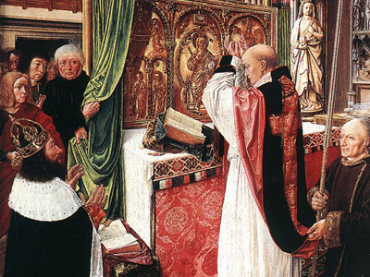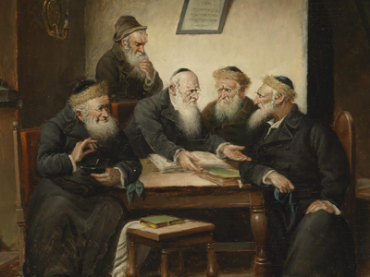Religion
Christmas Stories from French and Spanish Writers
General Editor Antoinette Ogden
Series: Kiraz Theological Archive 14
ISBN: 978-1-59333-564-9
This collection of fifteen Christmas tales from French and Spanish sources represents a variety of genres. In the style of the late nineteenth century holiday story, this work of fables and stories will set an appropriate mood for the holidays.
$174.00
The Gospel in the Stars
Or, Primeval Astronomy
By Joseph Seiss
ISBN: 978-1-59333-569-4
The charm of Seiss’ thesis saw this intriguing book through five editions in the author’s lifetime. Exploring potential Christian imagery in the constellations, Seiss finds the message of redemption writ large in the nighttime sky. A truly original work, this book has held the interest of many readers over the decades.
$212.00
St. Cyril of Alexandria, A New Testament Exegete
His Commentary on the Gospel of John
ISBN: 978-1-59333-581-6
This study portrays Cyril of Alexandria as exegete and theologian through an examination of his Commentary on the Gospel John. It begins with an attempt to place Cyril and his commentary within their context. This work argues that Cyril wrote his Commentary on the Gospel of John early in his writing career, almost a decade before becoming bishop. Cyril’s commentary on the Johannine Gospel reveals his exegetical method and his strong Trinitarian theology. The commentary also focuses on the nature and work of the Holy Spirit: the indwelling of the Spirit is the beginning of the newness of life.
$174.00
The Bustan al-Ukul by Nathanael ibn al-Fayyumi
Edited and Translated from an Unique Manuscript in the Library of Columbia University
By David Levine
ISBN: 978-1-59333-584-7
The Garden of Wisdom is a rare Jewish systematic theology, here presented in English translation as well as in the Arabic (in Hebrew script) original. It is a treatise of the theology of the Jews living in Southern Arabia written by Nathanael Ibn al-Fayyumi in the twelfth century when the Jews of Yemen were undergoing persecution.
$144.00
Studies in Oriental Social Life
and Gleams from the East on the Sacred Page
Series: Kiraz Theological Archive 32
ISBN: 978-1-59333-596-0
Trumbull’s tome was among the first to explore how looking at the Bible from the perspective of those in Palestine might influence the outlook of Western readers. In this volume Trumbull examines the social customs, religious practices, and basic concepts of those living in nineteenth-century Palestine to demonstrate how they bear upon modern understandings of the Bible.
$195.00
The Cosmic Covenant (Hardback)
Biblical Themes of Justice, Peace and the Integrity of Creation
ISBN: 978-1-59333-604-2
Murray’s study of the covenant theme begins with a chronological survey of the concept, beginning at the creation itself. He traces this theme through the Bible, noting its key components of justice and peace. The concept is a shared one between Judaism and Christianity, and Murray suggests that it continues to have ecological as well as spiritual relevance to the world today.
$150.00
Palestine under the Moslems
A Description of Syria and the Holy Land
Series: Kiraz Theological Archive 19
ISBN: 978-1-59333-606-6
This detailed study of the physical layout and traditions of the Holy Land and Syria contains an enormous amount of detailed information. For readers who wish to correct their vision of the actual physical geography of Syro-Palestine, this work remains a recommended source.
$244.00
Nebuchadnezzar’s Dream or The End of a Medieval Catholic Church
ISBN: 978-1-59333-583-0
The Catholic Church of the Third Millennium has retained many of its medieval images and formulations making its message incomprehensible for modern people. The book suggests different ways for modern Catholics to speak about Scripture, hierarchy, Jesus, the afterlife, sacraments, sin, redemption, sacrifice, supplicating prayer and other issues. His study seeks to be a faithful translation, advanced by modernity, of the same message that was previously transmitted in traditional medieval language.
$94.00
Eastern Crossroads
Essays on Medieval Christian Legacy
Series: Gorgias Eastern Christian Studies 1
ISBN: 978-1-59333-610-3
This volume contains papers from the First International Congress on Eastern Christianity held in Córdoba, Spain, November 2005. The encounter of medieval Christian writers with several linguistic traditions through the Middle Ages produced one of the most important branches of Middle Eastern literature. This encounter not only changed the nature of the respective writings throughout time, but also influenced considerably the development of the legacies transmitted by the writers and the scholars of various Eastern Christian churches.
$214.00
The Religion of Babylonia and Assyria, Especially in its Relations to Israel
Five Lectures Delivered at Harvard University
ISBN: 978-1-59333-614-1
Rogers, in a series of five lectures, explores the religion of ancient Mesopotamia by initially recounting the discovery of that lost religion. He then studies the gods, cosmologies, and sacred texts of the people of ancient Iraq. His work concludes with an examination of their formative myths and epics.
$155.00
Hebrew and Babylonian Traditions
The Haskell Lectures delivered at Oberlin College in 1913, and since revised and enlarged
Series: Kiraz Theological Archive 20
ISBN: 978-1-59333-618-9
In this formidable study, Jastrow compares several aspects of the religious life of the Israelites and ancient Babylonias by comparison of their written texts. Among the topics examined are the creation and flood accounts, the concept of the Sabbath, and the ethics of both cultures.
$180.00
Aphraates and the Jews
A Study of the Controversial Homilies of the Persian Sage in their Relation to Jewish Thought
By Frank Gavin
Series: Analecta Gorgiana 29
ISBN: 978-1-59333-620-2
In the first English attempt to address the Syriac homilies of Aphraates, Gavin sets a context for the material by considering the church and the sermons themselves. The topic of how the Jews are treated in the homilies is given special attention.
$50.00
Muslim Law of Marriage and Divorce
By Ahmed Shukri
Series: Analecta Gorgiana 31
ISBN: 978-1-59333-625-7
Concerned that many in his day did not understand basic Muslim teaching led Shukri to produce this brief monograph. In it he explores the various schools of Islamic jurisprudence and the teachings concerning the legal issues of marriage and divorce, including the topic of the equalities of the partners.
$61.00
Sennacherib's Invasion of Palestine
A Critical Source Study
By Leo L. Honor
Series: Analecta Gorgiana 32
ISBN: 978-1-59333-626-4
Considering both the Assyrian and biblical sources for the description of Sennacherib’s devastating invasion on Palestine, Honor tests the records to see if he can develop an historical account. He makes use of the Annals of Sennacherib and the biblical books of 2 Kings, 2 Chronicle, and Isaiah.
$62.00
Akbar and the Jesuits
An Account of the Jesuit Missions to the Court of Akbar
Series: Kiraz Historic Travels Archive 7
ISBN: 978-1-59333-630-1
The narrative of the Jesuit missions to Akbar, ruler of the Mughal Empire in India, is a noted period piece in travel writing. Although the author never traveled abroad, he compiled a substantial history of Jesuit missionary activity. This book narrates the missions to India in the 16th and 17th centuries.
$170.00
Anthropos and Son of Man
A Study in the Religious Syncretism of the Hellenistic Orient
Series: Kiraz Theological Archive 21
ISBN: 978-1-59333-631-8
Kraeling’s treatment of the ancient figure known as the "Anthropos” remains a challenging read even after several decades. Surveying Hellenistic, Gnostic, Manichean, Mandean, and Jewish sources, the author suggests a ubiquitous character known as the Anthropos was used in the New Testament to characterize aspects of Christ.
$133.00
Old Babylonian Temple Records
ISBN: 978-1-59333-632-5
Lau’s study focuses on a set of Babylonian temple texts in the library of Columbia University. These tablets are mostly administrative receipts, giving insight into the revenue and offering accounting in the temple. The texts are presented in transcription, English translation, and with line drawings.
$137.00
A Biblical Perspective
Series: Gorgias Eastern Christian Studies 2
ISBN: 978-1-59333-638-7
A popularly-written study of the biblical roots of the Eastern Orthodox Church’s mystical understanding of the knowledge of God. This unique study brings together the best of contemporary exegesis with the tradition of Eastern Christianity and illustrates the biblical roots of the Eastern Church's understanding of grace as the energy of God. The book presents, in lay terms, the shape for an Orthodox biblical theology for the 21st century and will be of interest to all Christians for whom the Bible is divine revelation and for whom tradition continues to be creative.
$82.00
History of the Za’faraan Monastery
By Ignatius Aphram I Barsoum; Translated by Matti Moosa
ISBN: 978-1-59333-639-4
The History of the Za’faran Monastery is for the first time offered in English translation to the readers. It was written in 1917 by Patriarch Ignatius Aphram Barsoum (d. 1957) when he was still a monk at the monastery. The book details the history of the monastery from its inception until modern times. It deals with with everything, from construction to its significance as a center of Syriac learning and learned men. Without this small book, the first of its kind, a great and significant page of the history of the Syrian Church of Antioch would have been lamentably lost.
$111.00
The Earliest Records of Christianity
With a New Introduction by George A. Kiraz
Series: Analecta Gorgiana 1
ISBN: 978-1-59333-500-7
This reprint of Sukenik’s article “The Earliest Records of Christianity” is presented as the first volume of Gorgias Press’s Analecta Gorgiana series with a new introduction by George Anton Kiraz. This fully illustrated archaeological abstract is sure to be of interest to readers concerned with the archaeology of the area around Jerusalem, as well as those interested in early artifacts of Christianity.
$39.00
The Improvement of the Moral Qualities, an Ethical Treatise of the Eleventh Century by Solomon ibn G
Printed from an Unique Arabic Manuscript, Together with a Translation, and an Essay
Series: Kiraz Theological Archive 23
ISBN: 978-1-59333-673-8
The original manuscript of the Arabic Improvement of the Moral Qualities was examined by Wise in order to prepare this edition. The text includes a copy of the original Arabic, a translation into English, and an essay on the place of Solomon ibn Gabirol in the development of Jewish ethics.
$127.00
The Commentary of David Kimhi on Isaiah
Edited, with his Unpublished Allegorical Commentary on Genesis
Series: Kiraz Commentaries Archive 2
ISBN: 978-1-59333-675-2
The commentary of Rabbi David Kimhi (1160-1235) on the prophet Isaiah, chapters 1-39, in a Hebrew critical edition, makes up the main portion of this study. Presented with an English introduction by Louis Finkelstein, the commentary also includes a useful biography of Kimhi in English, an introduction to his commentary, and a presentation of a previously unknown treatise on Genesis in Hebrew.
$168.00
Die Genesis Erklärt
Series: Kiraz Commentaries Archive 1
ISBN: 978-1-59333-676-9
The fourth German edition of August Dillmann’s commentary on Genesis fits proudly in the Gorgias Occasional Historic Commentary series. Based on the influential grounding of the University of Tübingen training received by the author, this historic commentary contains both philological and theological insights still valued today.
$201.00
The Works of Sahdona (Martyrius)
With Homilies by Jacob of Sarug
By Paul Bedjan
ISBN: 978-1-59333-677-6
Bedjan presents Sahdona’s Book of Perfection, a significant resource for the study of East Syrian monasticism, and some shorter works. Also included are several homilies by Jacob of Sarug on Jesus, Mary, virginity and the Council of Nicea.
$302.00
The Book of the Dove
Edited by Paul Bedjan
ISBN: 978-1-59333-678-3
The Book of the Dove is the ascetical guide composed by Bar-Hebraeus for aspiring hermits. It concerns the training of the body and the soul for ascetical life. The spiritual rest of the perfect is also described, along with a spiritual autobiography of Bar-Hebraeus himself.
$139.00
Filter by
Filter by price
Filter by manufacturer



























